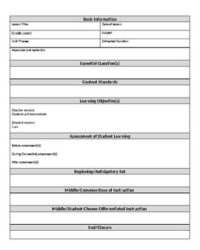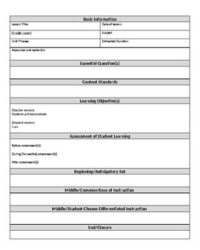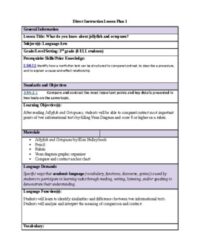Navigating the edTPA assessment can feel like a monumental task for aspiring early childhood educators. It’s a comprehensive evaluation designed to measure your teaching effectiveness, and at its core lies your ability to plan, implement, and assess engaging learning experiences. A well-structured lesson plan isn’t just a requirement; it’s your blueprint for success, demonstrating your understanding of child development, content knowledge, and pedagogical strategies.
Think of a robust lesson plan as your personal guide through the teaching process, ensuring you hit all the necessary marks for your students and for the edTPA rubric. It’s about more than just listing activities; it’s about connecting theory to practice, anticipating student needs, and demonstrating a clear vision for learning. This becomes especially critical in early childhood settings where learning is often play-based and highly integrated across domains.
Crafting Your Blueprint: Essential Components of an Early Childhood Lesson Plan for edTPA
When you’re preparing for edTPA, your early childhood lesson plan isn’t just a daily schedule; it’s a deep dive into your instructional design and pedagogical choices. It needs to clearly articulate how you plan to support young learners’ development across cognitive, social-emotional, and physical domains. This comprehensive approach is what separates a basic plan from an edTPA-ready one, allowing assessors to see your thought process and intentionality in fostering learning.
A strong template will guide you to include all the critical elements necessary for demonstrating competence. This includes specific learning objectives that are measurable and developmentally appropriate, detailing the academic language you’ll introduce and support, and outlining how you’ll differentiate instruction to meet the diverse needs of all learners in your classroom. For early childhood, this often involves considering various modalities for learning – hands-on, sensory, movement-based – and how you’ll scaffold new concepts.
The edTPA also heavily emphasizes assessment. Your lesson plan must clearly show how you will monitor student progress throughout the lesson, using both formative and summative strategies appropriate for young children. This could involve observational checklists, anecdotal notes, or collecting work samples from children’s play and exploration. Beyond just observing, you need to explain how you’ll use that data to inform your next steps in instruction, demonstrating a responsive teaching cycle.
Why Structure Matters for EdTPA Success
A structured template isn’t just about ticking boxes; it’s about ensuring clarity and coherence in your teaching. It forces you to think systematically about:
- The “what” (learning objectives)
- The “how” (instructional strategies, materials, procedures)
- The “who” (differentiation for individual student needs)
- The “proof” (assessment methods)
Having a consistent framework helps you articulate your pedagogical decisions effectively, which is vital for the commentary sections of your edTPA portfolio. It also acts as a robust guide during your actual teaching, ensuring you stay focused on your learning goals and student engagement. A good edtpa early childhood lesson plan template should prompt you to reflect on prior knowledge, anticipate misconceptions, and plan for engaging, age-appropriate activities that truly foster development.
Optimizing Your Template for Impact and Clarity
Developing an effective edtpa early childhood lesson plan template is more than just filling in blanks; it’s about making strategic choices that showcase your teaching prowess. Your template should prompt you to think deeply about each phase of the learning experience, from activating prior knowledge to extending concepts and reflecting on the outcomes. It’s a tool that not only organizes your thoughts but also elevates your planning to meet the rigorous demands of the edTPA.
When you’re working with or creating your template, consider how each section connects to the others. For instance, do your learning objectives directly align with your assessment methods? Does your planned differentiation genuinely support the diverse learners you’ve identified? Thinking about these interconnections will help you present a cohesive and well-justified teaching plan, which is crucial for earning a strong score on your edTPA.
Here are some key considerations for optimizing your template:
- Clarity in Learning Objectives: Ensure they are specific, measurable, achievable, relevant, and time-bound (SMART).
- Detailed Academic Language Support: Clearly outline how you will introduce, reinforce, and assess discipline-specific vocabulary.
- Thoughtful Differentiation: Describe specific strategies for individual students, including those with IEPs/504s, English language learners, and advanced learners.
- Integrated Assessment: Connect formative and summative assessments directly to your learning objectives.
- Reflection Prompts: Include space for post-lesson reflection on student learning and instructional effectiveness.
By focusing on these elements, your template becomes a powerful instrument for both planning and demonstrating your teaching competence.
Ultimately, your dedication to detailed and thoughtful lesson planning will shine through your edTPA portfolio. A well-designed lesson plan template streamlines this complex process, ensuring that you’ve considered every angle of student learning and development. It’s not just about meeting requirements, but about fostering deep, meaningful learning experiences for every child in your care.


